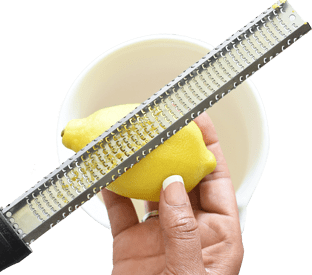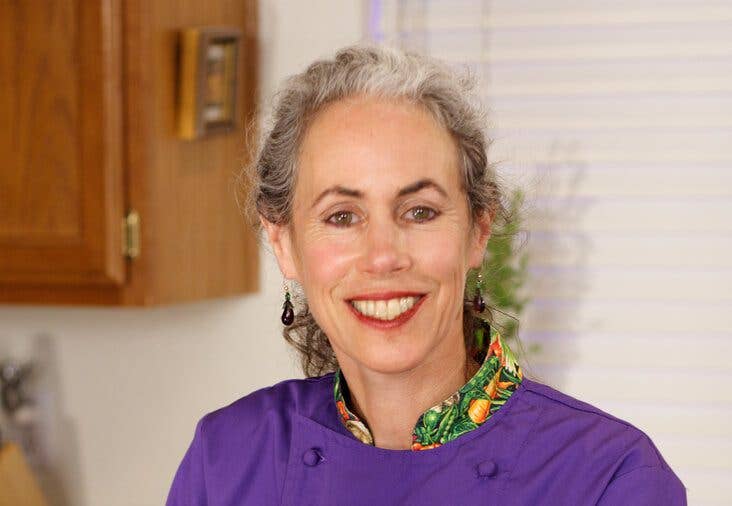For many people, it’s tough getting a home-cooked meal on the table every day. If you eat a whole-food, plant-based diet, it’s even more difficult, since you will probably want to include whole grains and beans cooked from scratch. Enter the pressure cooker, a tool that I think is essential in a plant-based kitchen.
The best part of using a pressure cooker is that it can save you both time and money. It can solve the nightly “What’s for dinner?” problem, make cooking simpler, and result in better-tasting meals. In short, it can change your life. I believe so strongly in this concept that I have been teaching people how to cook with pressure for 20 years. Trust me, the pressure cooker can become your new best friend.
More Delicious Food
The pressure cooker works by turning liquid into steam and cooking food in a sealed pot. The food doesn’t cook by boiling; instead, it cooks with superheated (almost 250ºF) steam. Because the food cooks faster and very little moisture escapes, the flavors are richer and more developed. In my many years of pressure cooking, I have always noticed that vegetables tend to have brighter colors and better textures when cooked this way compared to many other ways of cooking.
Cooked Beans and Legumes in a Flash
Do you buy canned beans to avoid having to cook beans from scratch? Many people avoid cooking legumes (beans, peas, and lentils) because they’re afraid of not cooking them correctly and/or don’t want to spend hours in the kitchen. Most presoaked beans take about an hour to cook on the stovetop, but pressure-cooked soaked beans (presoaked overnight, all day, or with a “quick soak”*) take 6 to 12 minutes at pressure in the pressure cooker.
To cook 1 cup presoaked beans (such as black, pinto, kidney, or white), combine them with ½ to ¾ cup liquid (broth or water) in a pressure cooker. Set your pressure cooker to 8 minutes; for a stovetop cooker, heat to high and then lower the heat to maintain pressure. In about 25 minutes from start to finish, you will have perfectly cooked beans. It works even better with lentils, which do not require presoaking and generally take just 4 minutes for red lentils and 6 to 8 minutes for green, French, or black lentils at pressure. Beans can also be cooked directly from dry, which takes three to four times as long as cooking presoaked beans, but still saves hours of soaking time.
(Related: Pressure Cooked White Beans with Garlic, Greens, and Tomato)
Whole Grains in Half the Time
Almost all whole grains take half the time to cook in the pressure cooker as they do to cook on the stovetop. Brown rice takes just 22 minutes at pressure. It is important to note that bringing your cooker to pressure and letting it come down does take some additional time. However, you will still be saving significant time over traditional cooking. In addition, the pressure cooker locks in flavor and helps maintain texture to produce better-tasting meals.
(Related: Pressure Cooked Pumpkin-Spiced Steel Cut Oats)
Perfect Vegetables in Minutes
Vegetables cooked in the pressure cooker are amazingly fast and easy: Imagine 1 minute for broccoli, 2 minutes for carrots, or 3 minutes for cubed potatoes. Potatoes and sweet potatoes can easily be cooked on a rack over 1 cup of water for 10 to 14 minutes at pressure depending upon their size. Whole winter squash can be cooked in a similar way for 10 to 15 minutes, depending upon their size. (No need to poke these whole foods!)
Quick and Delicious Soups, Stews, and Main Dishes
Soups and stews come together in a flash, as do mixed dishes with grains and beans such as red rice and beans (10 minutes at pressure) or chunky chili (10 minutes at pressure).
If you want to give pressure cooking a try, I recommend Fagor stovetop pressure cookers and Instant Pot electric pressure cookers. If you already have a cooker, then try these sweet potato and black bean tacos from my latest cookbook.
* Note: there are a couple of ways to quick-soak beans. Cover the beans with 3 inches of water and bring to a boil for 1 minute. Immediately remove them from the heat and let sit, covered, for 1 hour. Alternatively, cover the beans with 3 inches of water, bring to low pressure (if your cooker has this setting), and then turn off your cooker immediately and let the pressure come down naturally. This process will take about 25 minutes. In either case, drain the liquid before proceeding with cooking.
Related News
Save 40% This WeekOn Forks Meal Planner

Forks Meal Planner takes the hard work out of making nutritious meals the whole family will enjoy.
SAVE $200 ON OUR ULTIMATE COURSE

Join our best-selling course at a new lower price!




